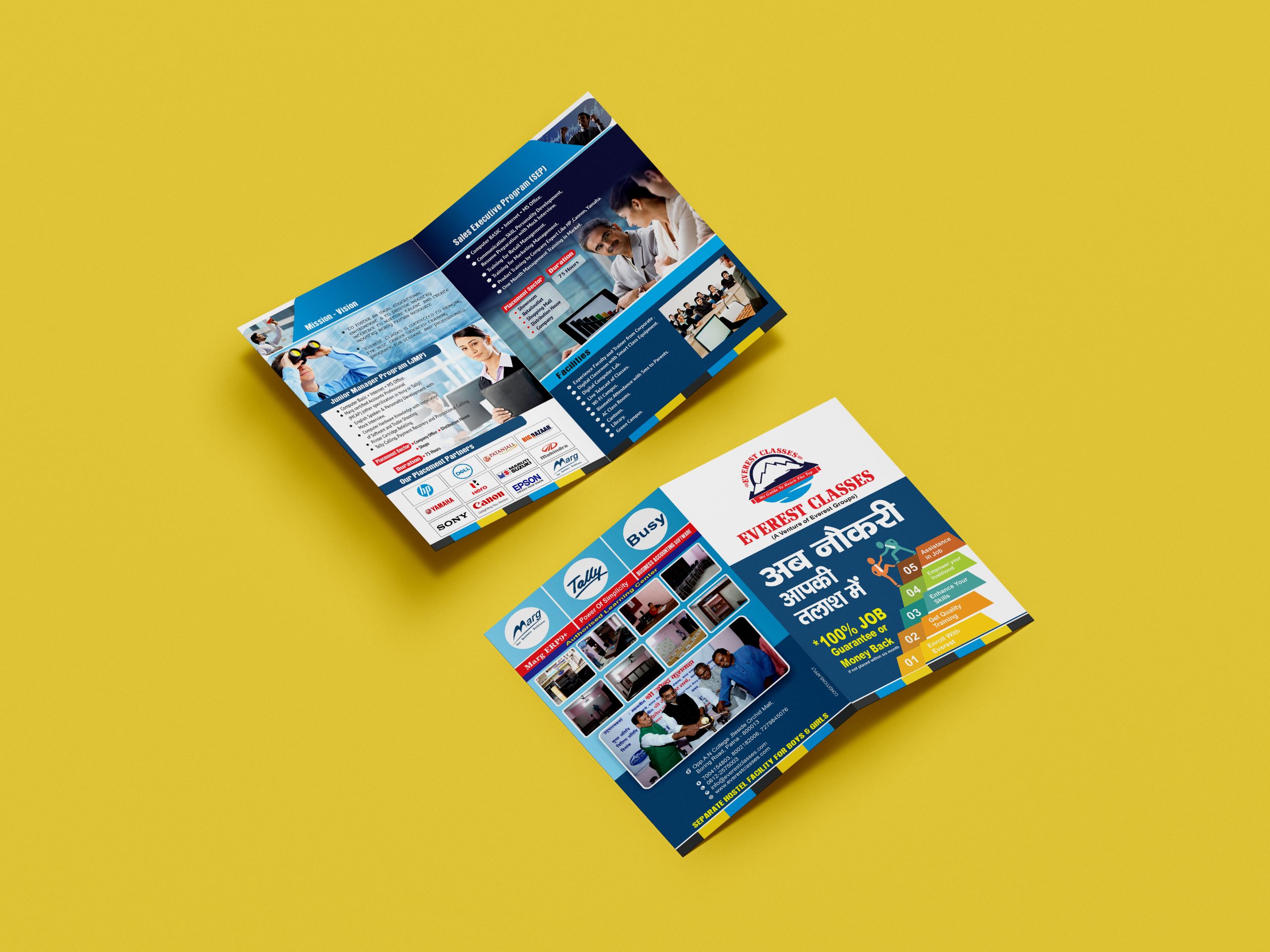Description
Brochure printing is the process of producing printed marketing materials in the form of brochures, which are folded documents used to convey information about a company, product, service, or event. Brochures are commonly used for promotional and informational purposes, allowing businesses to communicate key messages to their target audience in a compact and visually appealing format.
Here is some important information about brochure printing:
- Types of Brochures: Brochures come in various formats, including tri-fold, bi-fold, gate-fold, Z-fold, and more. Each format offers different layout options and determines how the information is organized and presented to the reader.
- Design and Content: The design and content of a brochure play a crucial role in its effectiveness. A well-designed brochure should have an attractive layout, clear typography, high-quality images, and consistent branding elements. The content should be concise, compelling, and tailored to the target audience.
- Paper Stock: The choice of paper stock affects the look and feel of the brochure. Common options include gloss, matte, and uncoated paper. Glossy paper provides a shiny finish and vibrant colors, while matte paper offers a more subdued and elegant look. Uncoated paper has a natural, textured feel.
- Printing Techniques: There are different printing techniques available for brochure production. Offset printing is the traditional method that delivers high-quality results with accurate color reproduction. Digital printing is a more cost-effective option for small print runs and allows for quicker turnaround times. Specialty printing techniques like embossing, foiling, and spot UV coating can add visual interest and a premium touch to the brochure.
- Color Considerations: Brochures can be printed in full color (CMYK) or spot colors (Pantone). Full-color printing offers a wide range of colors and gradients, while spot colors ensure precise color matching for brand consistency. It’s important to ensure that colors are accurately represented in the printed brochure.
- Folding and Finishing: Folding is a critical aspect of brochure printing as it determines how the information is presented when the brochure is opened. Proper alignment and precise folding techniques are essential for a professional finish. Finishing options such as trimming, scoring, and folding machines ensure clean edges and secure folds.
- Quantity and Cost: The quantity of brochures to be printed can affect the overall cost. Printing in larger quantities often provides cost savings per unit, while smaller print runs are more suitable for targeted campaigns or limited distribution. It’s important to work with a printing provider who can offer competitive pricing and volume discounts.
- Turnaround Time: The turnaround time for brochure printing depends on factors such as the complexity of the design, printing technique, paper stock availability, and quantity. It’s important to plan ahead and allow sufficient time for design, proofing, printing, and delivery to meet any deadlines or event dates.
- Proofing and Quality Control: Before finalizing the print run, it’s essential to review a print-ready proof carefully. This allows you to check for any errors, ensure proper layout, verify colors, and confirm that all content is accurate. Quality control measures are also implemented during the printing process to ensure consistency and accuracy in the final product.
- Printing Provider: Choosing a reliable and experienced printing provider is crucial for successful brochure printing. Look for a company with a good reputation, a portfolio of high-quality work, and excellent customer reviews. They should have the expertise, equipment, and capabilities to meet your specific requirements and provide exceptional results.
By understanding these aspects of brochure printing, you can effectively plan and execute your brochure production to create impactful marketing materials for your business.







Reviews
There are no reviews yet.